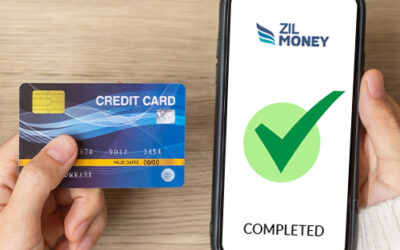The last decade has seen a lot of improvements in the financial industry. With so many new advancements, it can be hard to stay current on all of the changes happening. Zil Money has made electronic fund transfers easier for everyone by making them more accessible.
Electronic Fund Transfer(EFT) is one of the most popular digital payment methods in the B2B world today. Almost no errors can occur when the accounts payable department of an organization processes Electronic Fund Transfers. Additionally, suppliers receive payment on time and are not required to visit a bank to deposit a paper check, the traditional payment method. A supplier’s bank account is directly credited with the purchasing company’s funds through Electronic Fund Transfer. Both buying and supplying companies benefit from this type of payment because it prevents unnecessary follow-ups, thus facilitating a smooth flow of business.
Digital Solution for Payments
In the B2B world, electronic funds transfers are replacing checks as a form of digital payment.
A supplier must have an active bank account to receive Electronic Fund Transferpayments. Suppliers are responsible for requesting Electronic Fund Transferenrollment from their customers. For the Electronic Fund Transferpayment registration process to be successful, the supplier must provide the customer with the correct transit number and bank key. A US-based supplier, for example, must have a nine-digit ABA/Routing number. A Canadian supplier’s bank account should have a five-digit transit number and a three-digit bank key.
Banks specify standard Electronic Fund Transferformats based on country and currency. Hence, it is important to design Electronic Fund Transferformats carefully according to the guidelines provided by the corresponding banks.
The supplier must be paid when delivering goods/services to the customer. In this case, the supplier sends the customer an invoice. Invoices can be submitted via multiple channels, including the supplier portal, electronic data interchange (EDI), email, secure file transfer protocol (SFTP), courier, etc. An invoice is received by the accounts payable department, validated, and processed through their AP platform. Based on the customer approval matrix, the invoice is then approved. A completed invoice is considered ‘Approved’ once approved at all levels and is ready for payment.
How to Process Electronic Fund Transfers?
To process Electronic Fund Transfer payments, organizations have implemented advanced AP solutions. The payment processor creates a batch of invoices approved for payment using Electronic Fund Transfer.’ Depending on the due date, business unit, currency, and supplier(s), the paymentprocessor can create a payment batch for the Electronic Fund Transfer. Paymentprocessors can send payment batches for approval according to the organization’s approval hierarchy after creating a payment batch.
Upon approval, an Electronic Fund Transfer file is generated. These Electronic Fund Transfer files are integrated with the bank to make payments. Several options are available for businesses to integrate Electronic Fund Transfer files with banks. Electronic Fund Transfer files can be sent to an SFTP location; from there, they are picked up by the bank through SFTP. The bank validates details and disburses payments to suppliers in Electronic Fund Transfer payment batches.
Necessities of EFTs
An Electronic Fund Transfer file must contain all the necessary information, such as the unique client ID, the Electronic Fund Transfer file number, date, bank details, invoice count, supplier names, and payment amount.
As soon as payment is disbursed to suppliers by the bank, a payment confirmation file is sent to the customer’s SFTP location. Using an automated batch job, the payment confirmation file is picked up, invoices are identified, and payment details, such as payment reference numbers and dates, are updated.
At this point, the status of the invoices is updated to ‘paid,’ and remittance advice is generated. In this remittance advice, you will find details such as the invoice tagged to the supplier, the total amount paid, the date of payment, and the payment batch.To process this remittance advice, an automated email system is sent to the supplier to prepare their accounting and reconciliation records.
So, by using the Electronic Fund Transfer, you can manage end-to-end invoice processing operations and payment disbursement activities seamlessly and transparently.
If you’re looking for a way to make payments easier, consider using electronic fund transfer. With Zil Money, you can send and receive payments quickly and easily without worrying about checks or cash. Plus, there are no fees associated with using Zil Money, so it’s a great way to save money on your payments. Give it a try today and see how easy it is to use!






